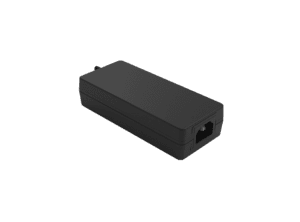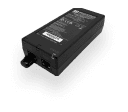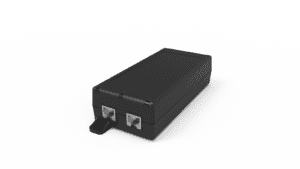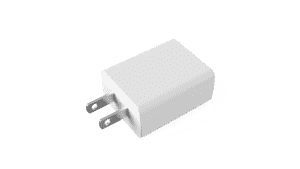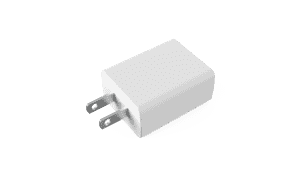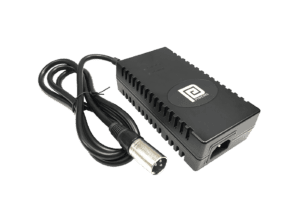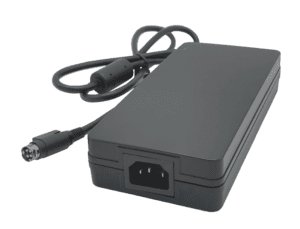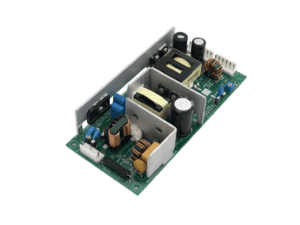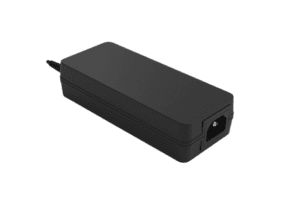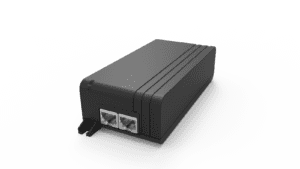BLOG
How PoE Powers Smart Cities: Transforming Urban Living with Advanced Technology
Table of contents

As cities around the world strive to become smarter and more efficient, Power over Ethernet (PoE) technology is playing a crucial role in this transformation. PoE enables the seamless integration of power and data transmission over a single Ethernet cable, simplifying the deployment of various smart city applications. This article explores how PoE is revolutionizing urban living, enhancing connectivity, and creating more efficient and sustainable urban environments.
Understanding Power over Ethernet (PoE) in Smart Cities
Power over Ethernet (PoE) technology allows for the transmission of electrical power and data over standard Ethernet cables. This capability eliminates the need for separate power and data cables, simplifying the installation and maintenance of networked devices. In smart cities, PoE powers a wide range of applications, from street lighting and traffic management to public Wi-Fi and security systems.
Key Benefits of PoE for Urban Development
PoE technology offers several key benefits that make it ideal for urban development and the creation of smart cities.
Cost Savings
PoE reduces the need for extensive electrical infrastructure, leading to significant cost savings in both installation and maintenance. The use of existing Ethernet cabling for power and data transmission simplifies the deployment of networked devices, reducing labor and material costs.
Improved Connectivity
PoE enhances connectivity by providing a reliable and consistent power source for networked devices. This ensures that critical smart city applications, such as traffic management systems and public safety cameras, remain operational without interruption.
Scalability and Flexibility
The scalability and flexibility of PoE make it ideal for growing urban environments. As cities expand, PoE networks can be easily scaled to accommodate new devices and applications, supporting the dynamic needs of smart cities.
Top Applications of PoE in Smart Cities
PoE technology supports a wide range of applications that enhance the functionality and efficiency of smart cities.
Smart Street Lighting
PoE-powered street lighting systems, including LED streetlights, offer numerous benefits, such as energy efficiency, reduced maintenance costs, and improved public safety. These systems can be controlled remotely, allowing for dynamic lighting adjustments based on real-time conditions, with power requirements typically ranging from 15.4W (IEEE 802.3af) to 90W (IEEE 802.3bt) depending on the type and number of LEDs.
Public Wi-Fi Networks
PoE powers public Wi-Fi access points, providing reliable and widespread internet connectivity in urban areas. This enhances communication, supports local businesses, and improves the overall quality of life for residents and visitors. Access points usually require around 15W to 60W.
Traffic Management Systems
PoE is used to power traffic cameras, sensors, and signaling devices, enabling real-time monitoring and management of traffic flow. This reduces congestion, enhances road safety, and improves the efficiency of urban transportation networks. Traffic cameras and sensors typically need between 7W and 30W.
Security and Surveillance
PoE supports the deployment of security cameras and surveillance systems, ensuring continuous operation and reliable data transmission. This enhances public safety and helps in crime prevention and investigation. IP cameras generally require between 4W and 25W, depending on features like pan-tilt-zoom (PTZ) capabilities.
Digital Signage
PoE powers digital signage for advertising, public information displays, and interactive kiosks in urban centers. Digital signs and kiosks can require up to 60W or more, depending on the size and features.
Smart Buildings
PoE is used within buildings to power VoIP phones, security systems, access control devices, and building automation systems. Devices in smart buildings can range from 3W for simple sensors to 60W for more complex systems like touch panels.
Environmental Monitoring
PoE supports sensors and monitoring equipment for air quality, noise levels, and weather conditions, contributing to better environmental management. Environmental sensors typically consume between 3W and 10W.
Power Requirements and Standards
IEEE 802.3af (PoE): Provides up to 15.4W of power per port. Suitable for basic devices like VoIP phones and simple IP cameras.
IEEE 802.3at (PoE+): Delivers up to 30W per port. Ideal for more demanding devices such as advanced IP cameras with PTZ functions and larger Wi-Fi access points.
IEEE 802.3bt (PoE++): Extends power delivery up to 60W (Type 3) and 90W (Type 4) per port. This standard supports high-power devices like video conferencing systems, large digital displays, and complex smart pole configurations.
In summary, PoE is integral to modern urban infrastructure, providing a scalable and efficient power solution for a wide array of applications. The power requirements for these applications vary based on device complexity and functionality, guided by established IEEE standards.
Implementing PoE in Urban Infrastructure
Successfully implementing PoE in urban infrastructure requires careful planning and execution. Key considerations include selecting the right equipment, ensuring compatibility, and addressing potential challenges.
Selecting the Right Equipment
Choosing the appropriate PoE equipment is crucial for the success of smart city applications. This includes PoE injectors and powered devices that meet the specific requirements of the intended applications.
Ensuring Compatibility
Ensure that all components of the PoE network are compatible with each other. This includes verifying that powered devices can receive the required power levels from the PoE injectors. For example, a smart lighting system in a city park must be compatible with the PoE injectors used to power it, ensuring that the lights receive adequate power for consistent operation.
Addressing Challenges
Address potential challenges such as power limitations, environmental factors, and network security. Implement solutions to overcome these challenges and ensure reliable and efficient operation of the PoE network. For example, consider using surge protectors to handle power fluctuations, weatherproofing equipment to withstand harsh environmental conditions, and employing advanced encryption protocols to enhance network security.
Enhancing Public Safety with PoE Technology
Surveillance Systems
PoE-powered surveillance systems provide continuous monitoring and real-time data transmission, helping in crime prevention and investigation. These systems can be integrated with other security applications for comprehensive safety solutions. Additionally, PoE can be extended to secluded areas where there are fewer people and a higher potential for crime. By leveraging PoE extenders and repeaters, surveillance cameras can be installed in remote locations such as parking lots, alleys, and isolated pathways. This ensures that these areas are under constant surveillance, thereby enhancing security and deterring criminal activities.
Emergency Communication Systems
PoE supports emergency communication systems, ensuring reliable power and connectivity for emergency response devices. This enhances the ability of authorities to respond quickly and effectively to emergencies. Types of emergency response devices that use PoE include emergency call boxes, intercoms, and public address systems. These devices are essential in providing immediate assistance and communication during critical situations. PoE ensures that these systems remain operational even during power outages, offering a dependable solution for emergency preparedness and response.
Summary
PoE technology enhances the functionality of surveillance systems, emergency communication systems, and smart lighting for safety by providing reliable power and connectivity, especially in remote or high-risk areas. PoE extends surveillance capabilities to secluded areas with higher crime potential, supports various emergency response devices for quick and effective communication, and ensures continuous operation even during power outages.
- Extending Surveillance Capabilities: PoE extends surveillance systems to secluded, high-crime areas using extenders and repeaters.
- Enhancing Crime Prevention: Continuous monitoring and real-time data transmission enhance crime prevention and investigation.
- Supporting Emergency Response Devices: PoE supports emergency communication devices like call boxes, intercoms, and public address systems.
- Ensuring Operational Reliability: Reliable power and connectivity ensure emergency systems remain operational during power outages.
- Integrating Comprehensive Safety Solutions: PoE integration with other security applications offers comprehensive safety solutions.
Future Trends in PoE for Smart Cities
As technology advances, new trends in PoE are emerging, offering even greater potential for smart city applications.
Higher Power PoE Standards
Emerging PoE standards, such as IEEE 802.3bt (PoE++), support higher power levels, enabling the use of more powerful devices and advanced applications in smart cities.
AI and IoT Integration
Integrating PoE with AI and IoT technologies enhances the capabilities of smart city applications. These integrations provide real-time data, predictive analytics, and automated controls for improved efficiency and decision-making.
Enhanced Network Security
Future trends in PoE include enhanced network security measures to protect against cyber threats. This ensures the reliable and secure operation of smart city applications.
Top Features and Benefits
- Increased Power Capability: Higher power PoE standards support more advanced applications.
- Advanced Integrations: AI and IoT integration enhances the functionality and efficiency of smart city applications.
- Improved Security: Enhanced security measures protect PoE networks from cyber threats.
Best Practices
- Adopt New Standards: Stay updated with the latest PoE standards to leverage new capabilities.
- Integrate Advanced Technologies: Combine PoE with AI and IoT for enhanced smart city solutions.
Enhance Security: Implement advanced security measures to protect PoE networks.

Contact Our Team Today!
Our dedicated sales team and international partners are prepared to support you with your latest projects and initiatives globally.
Explore More with Phihong USA
As we conclude our exploration of PoE technology, it’s evident how these innovations are streamlining power and data integration across various industries. Phihong USA stands at the forefront of this technological advancement, offering a diverse range of power solutions designed to meet the evolving needs of modern industries.
Phihong USA’s extensive product lineup includes:
- Power over Ethernet (PoE) Solutions: Delivering reliable power and data transmission over a single cable, ideal for simplifying network installations and reducing costs.
- AC/DC Adapters and Power Supplies: From compact adapters to industrial-grade power supplies, Phihong provides solutions that ensure efficiency and reliability in various applications.
- Battery Chargers: Customizable chargers for lithium-ion and lead-acid batteries, supporting a wide range of power requirements for mobility and industrial applications.
- Medical Power Supplies: Specialized power solutions designed to meet the stringent requirements of the healthcare industry, ensuring safety and reliability.
Phihong USA is committed to innovation and excellence, continually developing products that meet the highest standards of performance and reliability. Their global reach and dedication to customer support make them a trusted partner in powering the future.
Here are some useful links to explore Phihong USA’s offerings further and bring in new potential clients:
Visit Phihong USA to discover how their advanced power solutions can support your business needs. Whether you’re looking to upgrade your network, or find reliable power supplies, Phihong USA has you covered.
By choosing Phihong USA, you’re partnering with a leader in power technology, ensuring your operations run smoothly and efficiently with top-tier power solutions.
FAQ
How does PoE technology benefit smart cities?
PoE technology benefits smart cities by simplifying the installation and maintenance of networked devices, reducing costs, and enhancing connectivity. It supports various smart city applications such as smart street lighting, public Wi-Fi networks, traffic management systems, and security and surveillance systems. PoE’s flexibility and scalability make it ideal for growing urban environments, ensuring efficient and reliable power delivery and data transmission.
What are the key applications of PoE in smart cities?
Key applications of PoE in smart cities include smart street lighting, public Wi-Fi networks, traffic management systems, and security and surveillance systems. PoE-powered smart street lighting reduces energy consumption and maintenance costs. Public Wi-Fi networks provide reliable internet access, enhancing communication and supporting local businesses. Traffic management systems improve road safety and reduce congestion, while security and surveillance systems ensure continuous monitoring and public safety.
How does PoE enhance public safety in smart cities?
PoE enhances public safety in smart cities by supporting the deployment of surveillance systems, emergency communication systems, and smart street lighting. PoE-powered surveillance systems provide continuous monitoring and real-time data transmission, helping in crime prevention and investigation. Emergency communication systems powered by PoE ensure reliable power and connectivity for emergency response devices. Smart street lighting integrated with surveillance and communication systems creates a cohesive public safety network, enhancing security and reducing crime.
What are the sustainable urban solutions supported by PoE?
Sustainable urban solutions supported by PoE include energy-efficient lighting, renewable energy integration, and smart building management systems. PoE-powered smart street lighting systems reduce energy consumption and carbon emissions. Integrating PoE with renewable energy sources such as solar panels promotes green energy use. Smart building management systems supported by PoE optimize energy use, reduce waste, and enhance the overall efficiency of urban buildings, contributing to the sustainability goals of smart cities.
What future trends in PoE technology should smart cities be aware of?
Future trends in PoE technology for smart cities include higher power PoE standards, AI and IoT integration, and enhanced network security. Emerging PoE standards, such as IEEE 802.3bt (PoE++), support higher power levels, enabling the use of more powerful devices and advanced applications. Integrating PoE with AI and IoT technologies enhances smart city applications by providing real-time data, predictive analytics, and automated controls. Enhanced network security measures protect PoE networks from cyber threats, ensuring reliable and secure operation of smart city applications.

